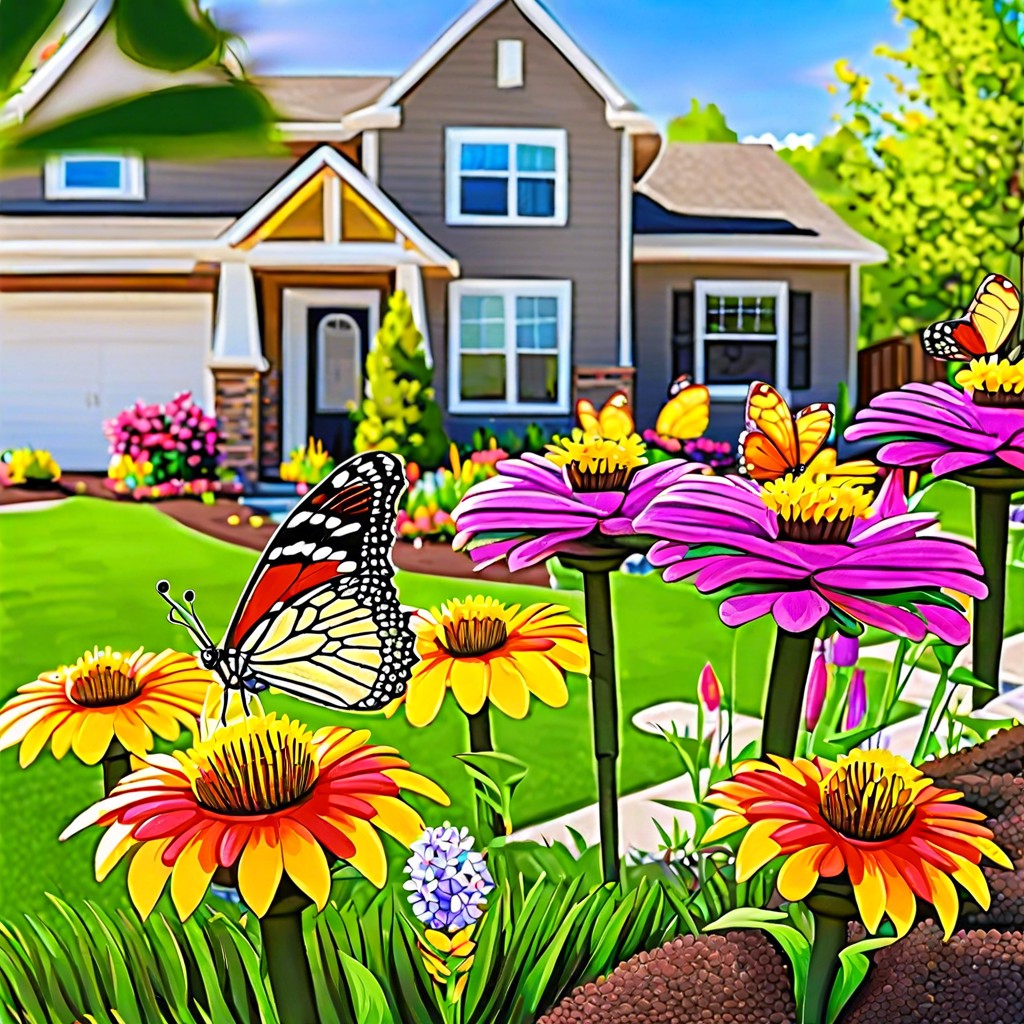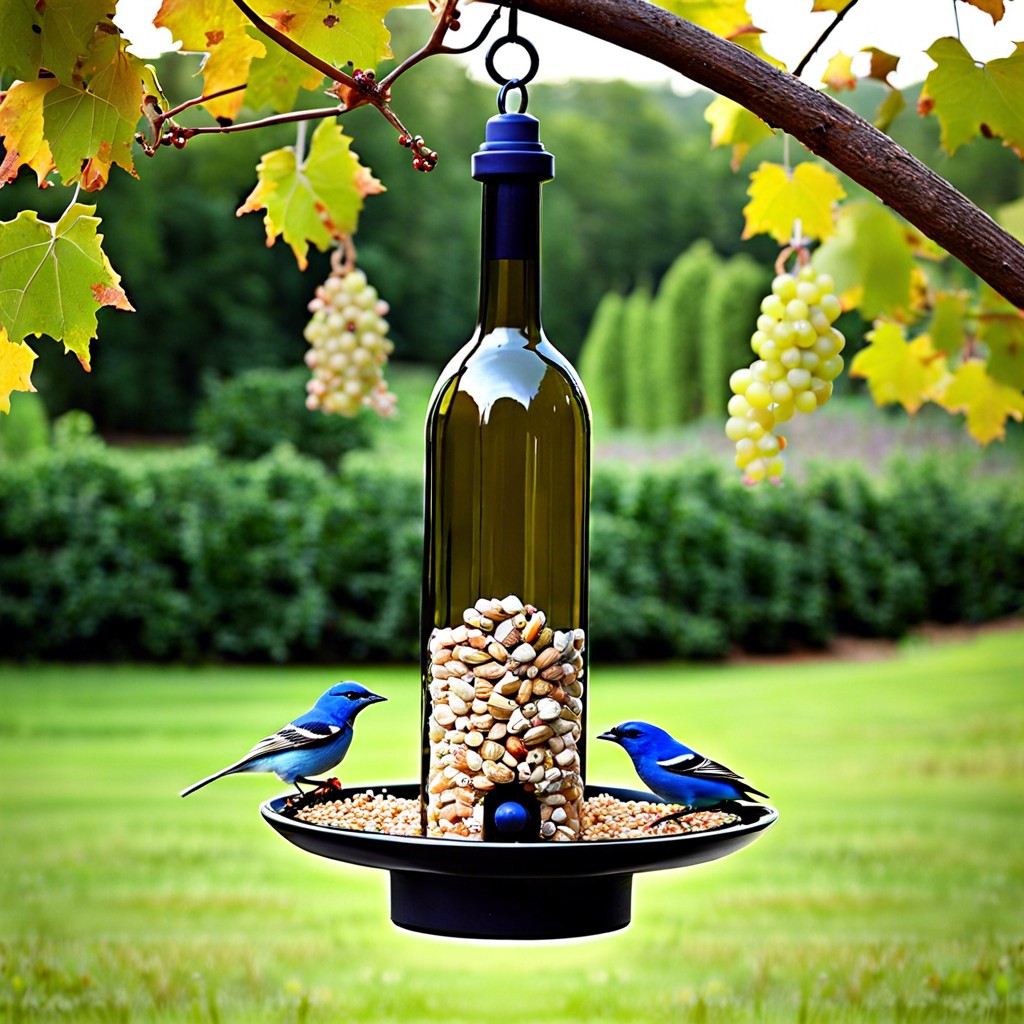Discover a selection of budget-friendly landscaping ideas that will transform your outdoor space without breaking the bank.
Craft a Pallet Garden
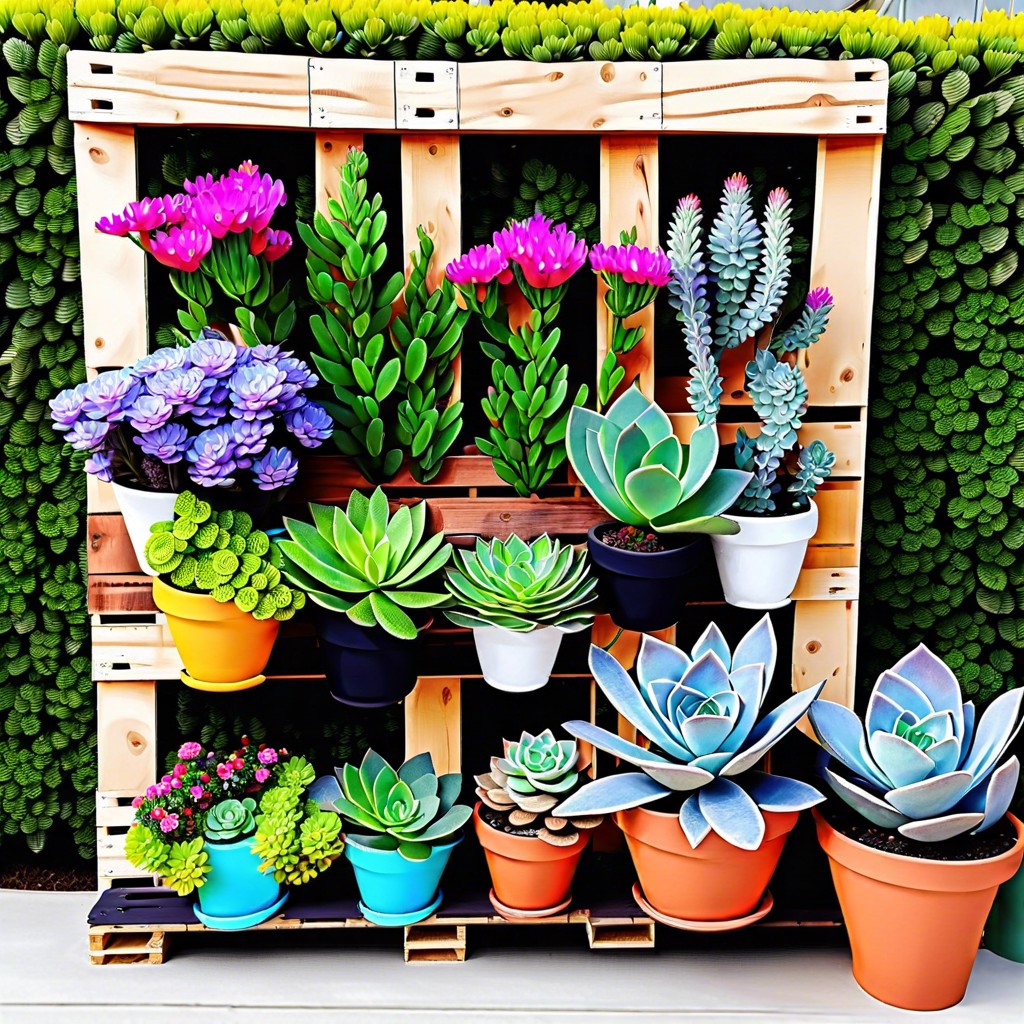
A pallet garden is a vertical planting structure that can transform a small or drab space into a lush, green area. By using reclaimed wooden pallets as planters, you can grow a variety of herbs, flowers, and even small vegetables efficiently and cost-effectively. This eco-friendly gardening solution not only recycles materials but also adds a touch of rustic charm to your outdoor landscape.
Recycle Bottles for Planters
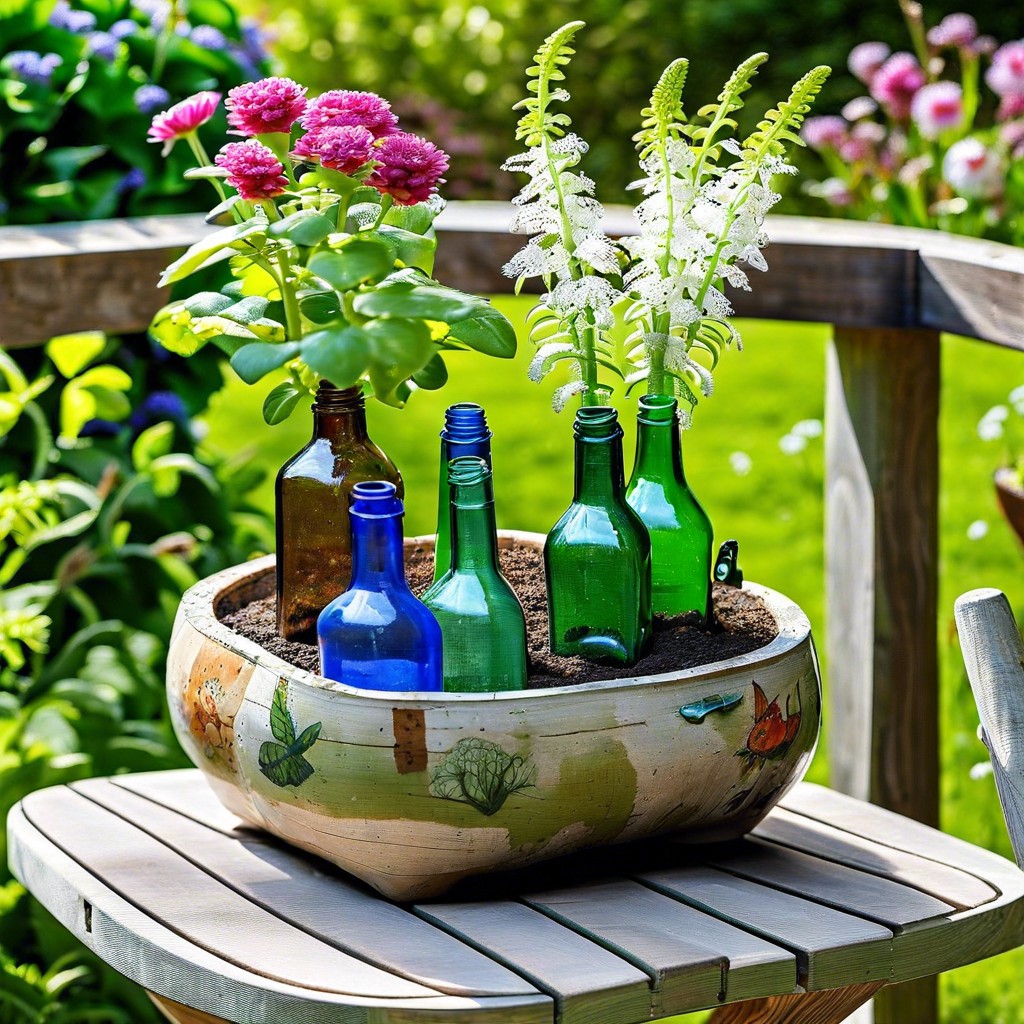
Recycling bottles to serve as planters breathes new life into waste, transforming it into a unique feature for green spaces. These eco-friendly vessels can house a variety of plants, from herbs to flowers, adding a pop of color and interest to your landscape. The clear or colored glass catches the sunlight, creating a striking visual effect amongst the greenery.
Utilize Tree Stumps As Seats

Transforming tree stumps into natural seating adds a rustic charm to your outdoor space. By sanding down the surface and applying a weather-resistant sealant, these organic seats can withstand the elements for years. Strategically placing them around a fire pit or garden creates a cost-effective and eco-friendly gathering spot.
Create a Mosaic Pathway With Old Tiles

Repurposing old tiles into a mosaic pathway offers a personalized touch to your garden at minimal expense. The colorful patterns provide a striking visual element that guides you through your outdoor space. This project not only recycles material that might otherwise go to waste but also adds a unique and artistic feature to your landscape.
Implement Beer Bottle Edging
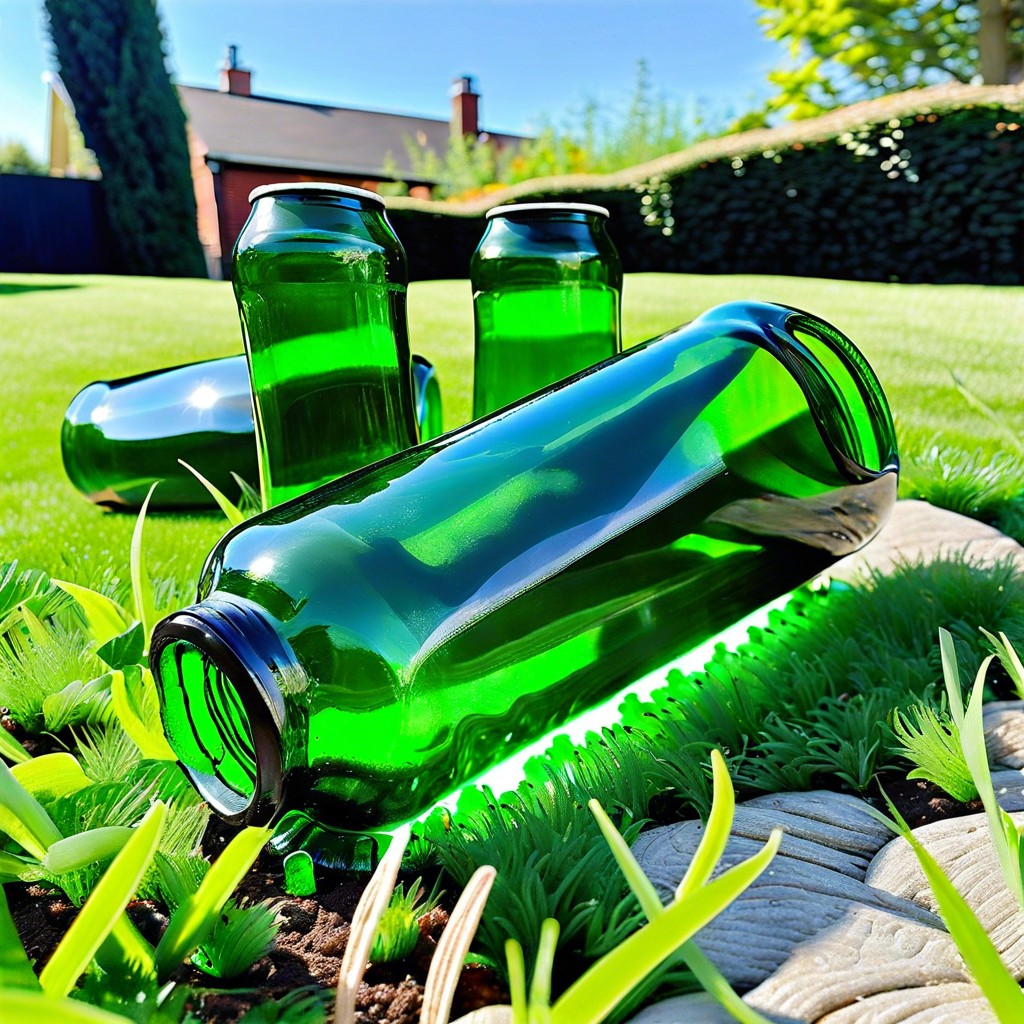
Beer bottle edging adds a unique and creative touch to garden beds, utilizing colorful glass for aesthetic appeal. By partially burying the bottles neck-down along the perimeter, this technique creates a durable and distinctive boundary. It’s an eco-friendly solution that repurposes empty bottles, giving them a new life in your outdoor space.
Start a Community Plant Swap

Engaging neighbors and friends in a plant exchange can invigorate your garden without financial expense. This communal event allows participants to diversify their plant collections by trading cuttings or seedlings they have in abundance. It fosters a sense of community while each person enriches their landscape with new varieties at no extra cost.
Craft a Twig Trellis
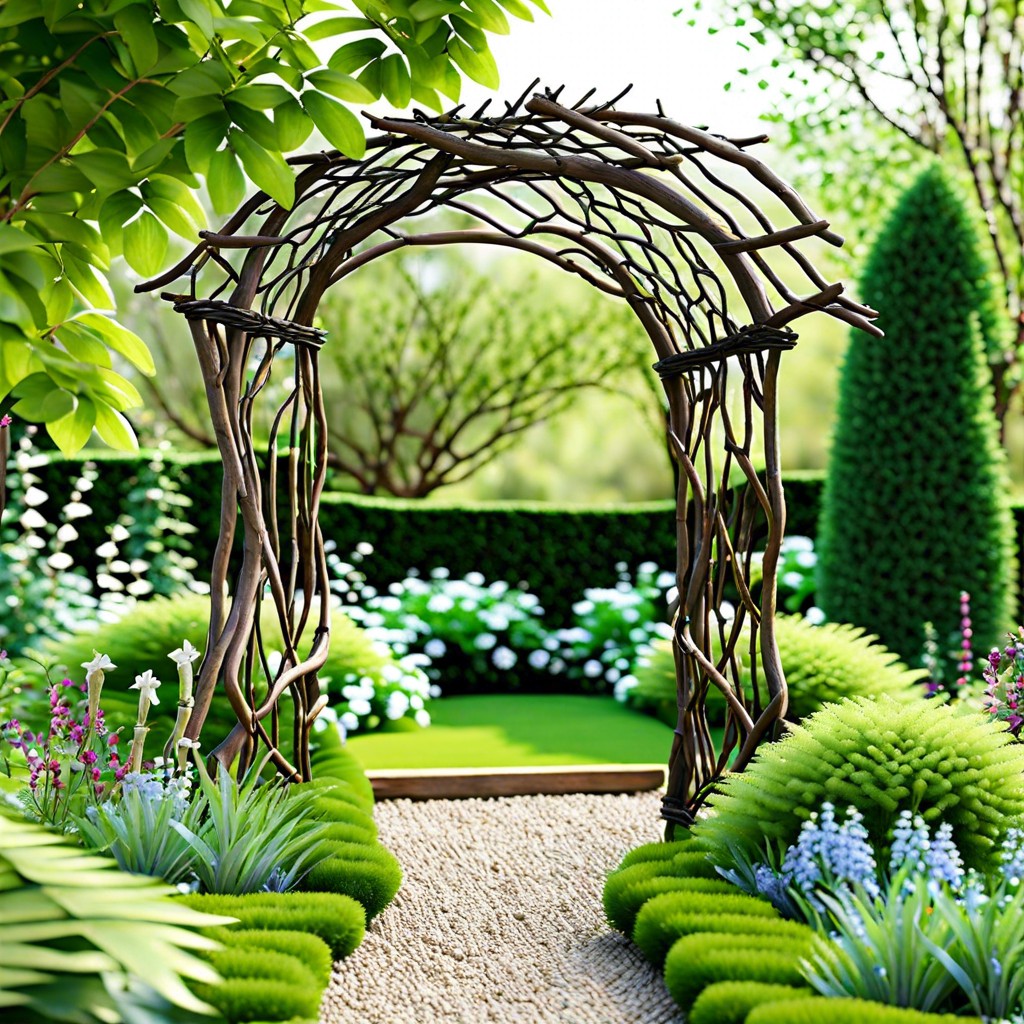
Twig trellises offer a charming, rustic touch to any garden while providing support for climbing plants like ivy, roses, or beans. By collecting fallen branches and twigs, you can arrange them into a functional piece that blends seamlessly with the natural landscape. These trellises also encourage vertical growth, saving ground space for other garden endeavors.
Assemble a Tire Swing or Planter
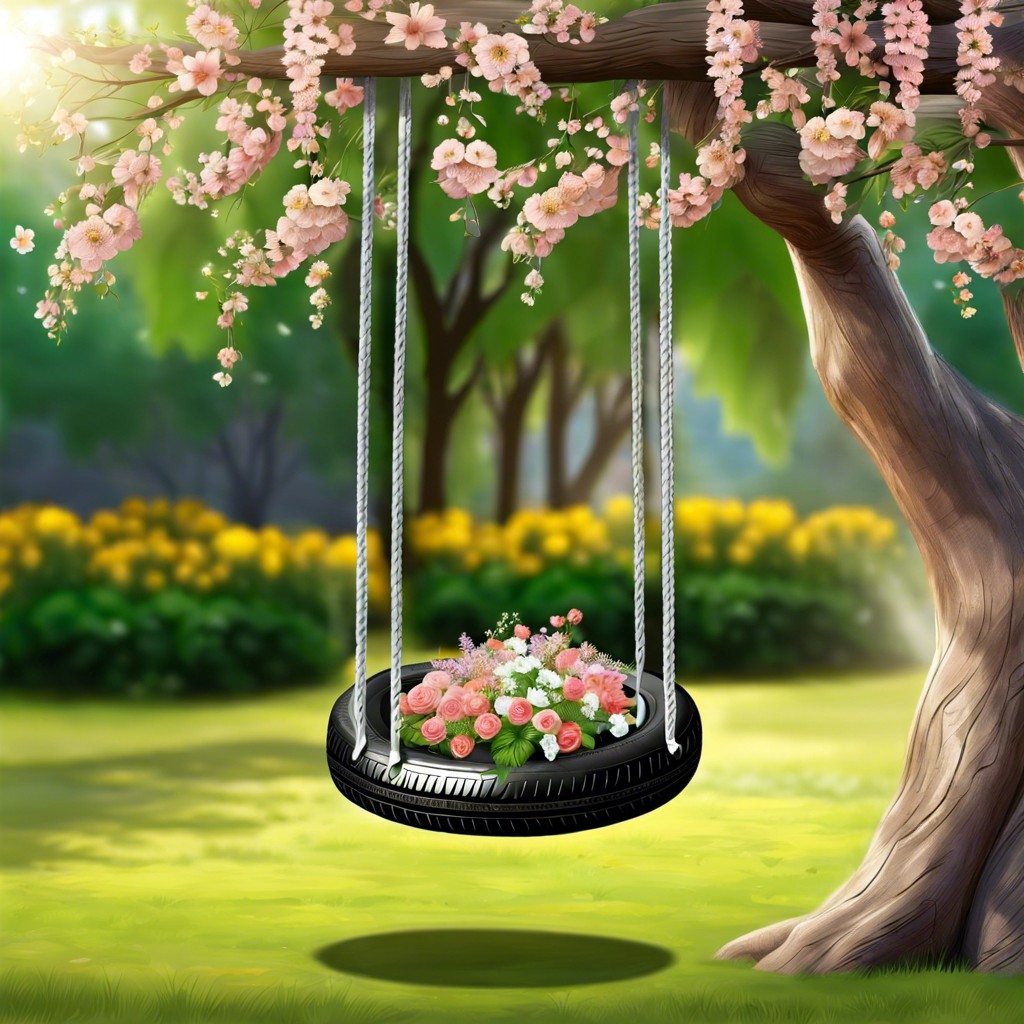
A tire swing adds a playful touch to your garden, creating a fun atmosphere without costly equipment. If a whimsical decoration is more your style, transform an old tire into a vibrant planter to showcase an array of flowers and greenery. This dual-purpose approach not only recycles effectively but also introduces a unique and personal element to your outdoor space.
Build a Birdhouse From Scraps

Transforming leftover wood or metal pieces into birdhouses adds both charm and utility to your garden. These homes for feathered friends serve as natural pest control by inviting insect-eating birds. Plus, they offer a creative touch that personalizes your outdoor space, acting as an eye-catching feature that harmonizes with the beauty of nature.
Cultivate a Wildflower Meadow Patch

Transforming a patch of your yard into a wildflower meadow offers an affordable and low-maintenance option, creating a vibrant tapestry that changes throughout the seasons. This approach not only enhances your garden’s aesthetic but also supports local wildlife by providing habitats and food sources. Opting for native species can ensure better growth and resilience, adapting effortlessly to the local climate and soil conditions.
Use Fallen Leaves As Mulch

Fallen leaves, often seen as yard waste, are actually a valuable resource for gardeners looking to enrich their soil without spending a penny. When used as mulch, they help retain soil moisture, suppress weeds, and add nutrients back into the ground as they decompose. This natural method enhances the health of your plants and reduces the need for chemical fertilizers, making it both cost-effective and environmentally friendly.
Construct an Herb Spiral
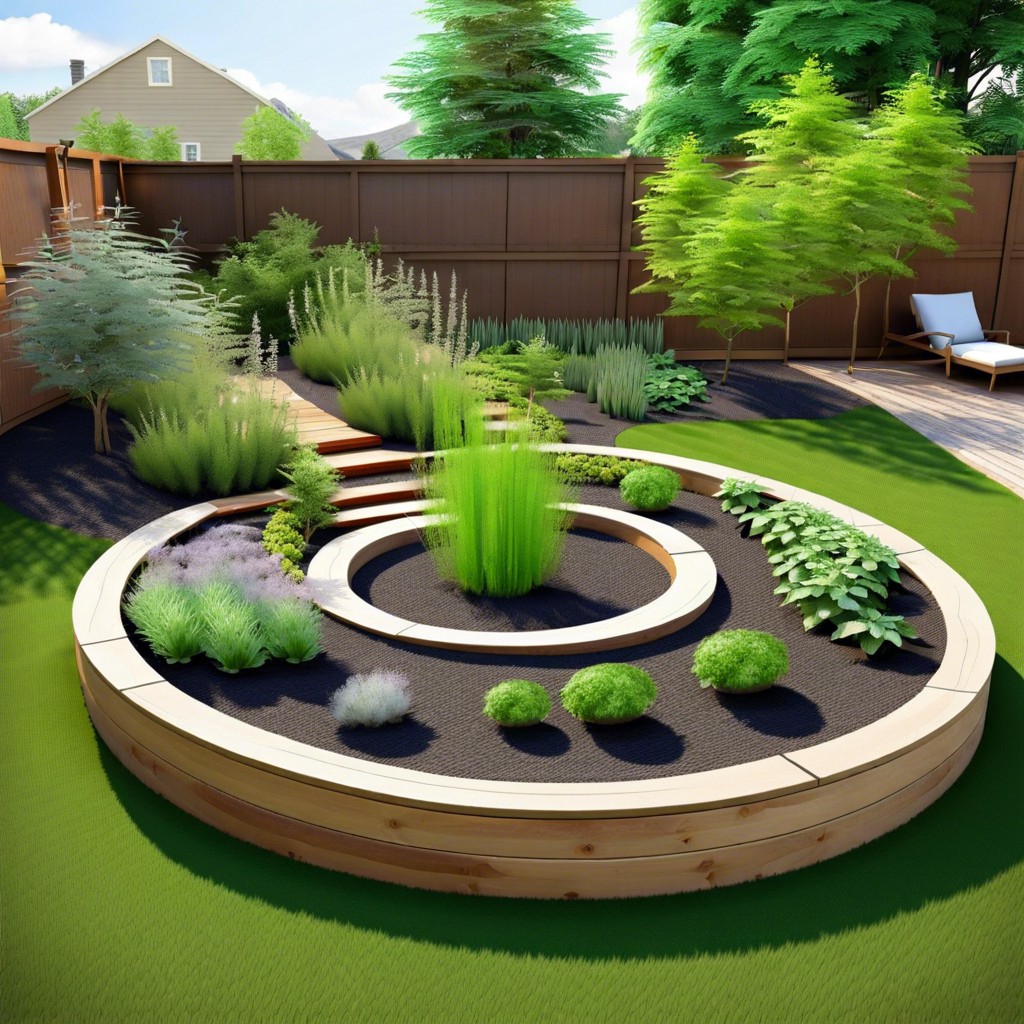
An herb spiral is a vertical garden structure that saves space while allowing you to grow a variety of herbs in one compact area. Its unique design takes advantage of gravity to aid in water drainage, benefiting plants with different moisture needs. By stacking stones or durable materials in a spiral, you create micro-climates that cater to both sun-loving and shade-requiring herbs.
Arrange a Cinder Block Garden

Cinder blocks serve as a sturdy and easy-to-assemble foundation for raised garden beds, adding a modern, industrial aesthetic to your outdoor space. Their hollow centers are perfect for planting herbs, succulents, or small flowers, maximizing space and minimizing soil usage. By simply stacking and arranging these inexpensive building materials, you can create a functional and attractive gardening area tailored to your desired layout and size.
Design a Front Yard Food Forest

A front yard food forest transforms the traditional lawn into a sustainable, edible ecosystem, teeming with fruits, vegetables, herbs, and edible flowers. This approach mimics natural ecosystems, combining layers of different plants that support each other, leading to a low-maintenance garden that maximizes space and productivity. By integrating perennials and self-seeding varieties, homeowners can enjoy a bountiful harvest year after year with minimal financial investment.
Propagate Succulents for Ground Cover
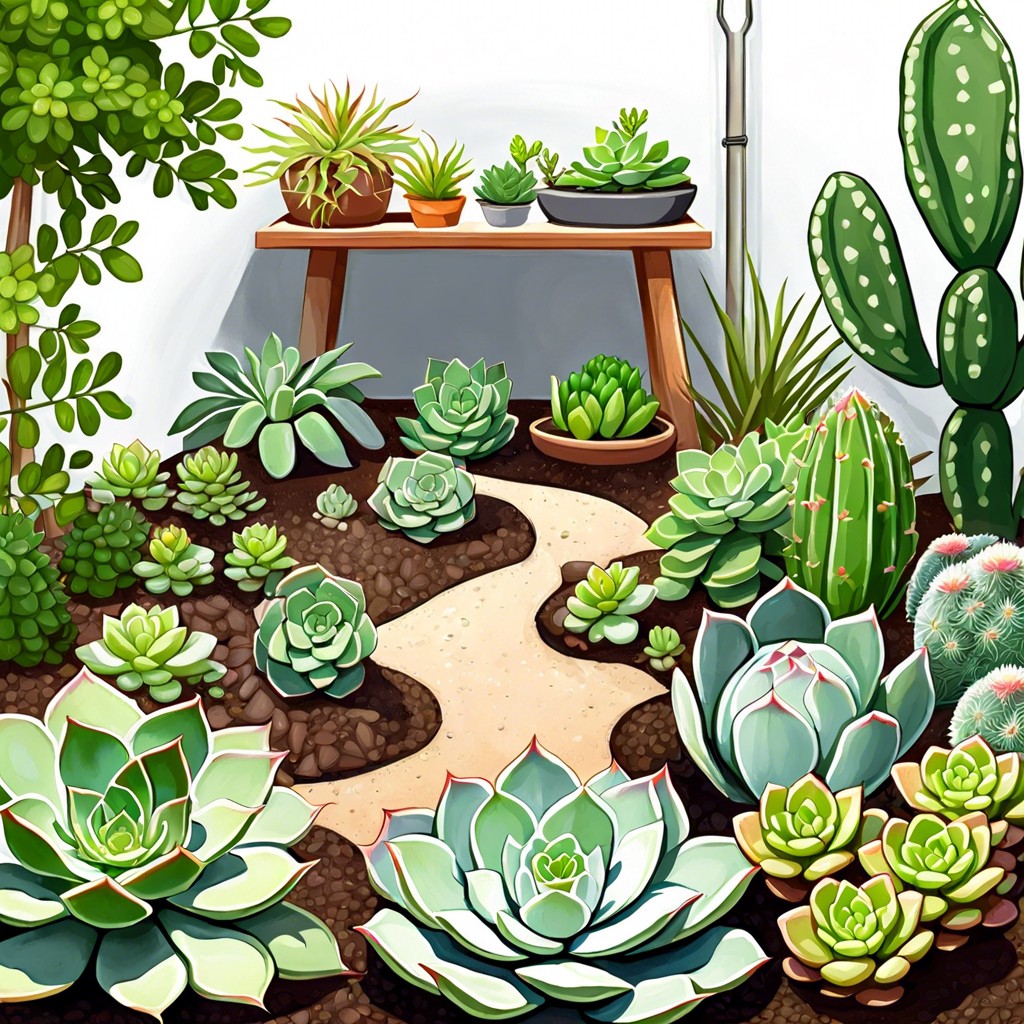
Succulents offer a drought-resistant, low-maintenance solution to cover bare patches in the garden. With their varied textures and colors, they create a visually appealing tapestry that’s both cost-effective and enduring. These hardy plants can easily be propagated from cuttings, making it simple to expand your ground cover without additional expense.
Ideas Elsewhere
- https://www.lawnstarter.com/blog/landscaping/cheap-landscaping-ideas/
- https://www.forbes.com/home-improvement/lawn-care/cheap-landscaping-ideas/
- https://www.thespruce.com/landscaping-on-a-budget-2131962
- https://www.reddit.com/r/landscaping/comments/yu4a0t/i_have_no_budget_for_landscaping_right_now_is/
- https://lawnlove.com/blog/cheap-landscaping-ideas/
- https://www.reddit.com/r/homeowners/comments/17cezk5/landscaping_ideas_for_cheap/
- https://www.arkaenergy.com/learn/cheap-landscape-ideas
- https://www.bhg.com/landscaping-ideas-for-front-yard-on-a-budget-7105082


